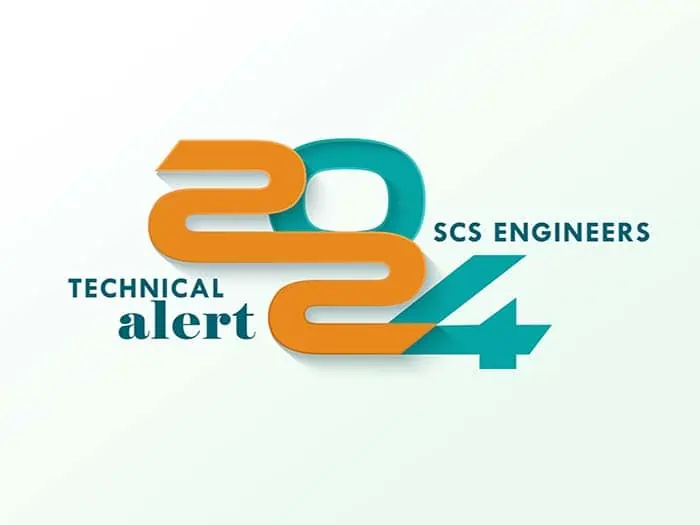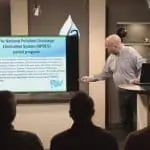


EPA is issuing a new Clean Water Act (CWA) rule that requires certain facilities to prepare and implement facility response plans (FRP) that address the storage and worst-case discharge of hazardous substances (HSs).
According to the EPA, the facility response plan requirements apply to facilities that could reasonably be expected to cause substantial environmental harm based on their location. These include facilities with a maximum onsite quantity of a CWA hazardous substance that meets or exceeds threshold quantities, located within a 0.5-mile radius of navigable water or conveyance to navigable water, and meets one or more substantial harm criteria.
From EPA’s site: See CWA Hazardous Substance Facility Response Plan Applicability.
Facilities may be identified as posing substantial harm either through a self-identification process or a process whereby EPA Regional Administrators may assess facilities on a case-by-case basis and, if appropriate, require a facility to develop a response plan based on, among other things, concerns related to potential impacts of a worst-case discharge on communities with environmental justice concerns.
The CWA hazardous substance FRP requirements apply to facilities that:
EPA estimates that the rule will impact 12,618 facilities, including 7,264 estimated for rule familiarization and the Substantial Harm Certification Form, and 5,354 facilities further developing and maintaining FRPs under the final rule.
Facilities will be required to submit FRPs to the EPA within three years of the new rule’s effective date.
Here is the link for the EPA webpage: https://www.epa.gov/hazardous-substance-spills-planning-regulations/final-rulemaking-clean-water-act-hazardous
And here is the link for the pre-publication of the Federal Register notice for the new rule: https://www.epa.gov/system/files/documents/2024-03/cwa-hs-frp-final-rule-pre-publication_.pdf
CERLCA Jurisdiction and PRP Definition
A recent Meyers | Nave publication discusses the Supreme Court’s April 20, 2020 decision in Atlantic Richfield Co. v. Christian. The firm suggests the decision adds another layer of complexity to the Comprehensive Environmental Response, Compensation, and Liability Act – CERCLA, liability issue. The decision opens the door for state courts to hear claims that challenge EPA-defined approved clean-ups and has the potential to expand the “potentially responsible party” – PRP class for current “owners” of a “facility.”
The Court’s decision introduces new considerations into CERCLA liability analysis and settlement strategy. The Court’s holding will have many immediate ramifications, including the following:
Clean Water Act Developments
In April, the courts and federal agencies announced major developments significantly affecting regulation under the Clean Water Act – CWA and how the CWA may be applied in the future.
Each of these developments could have far-reaching implications for regulations under the CWA. Assuming the 2020 Rule withstands legal challenges, it is seen as favorable for industry and other regulated entities, while the two judicial decisions are perceived as problematic for such entities. Davis Graham & Stubbs describes each development in more detail in the firm’s recently published article.
MATS Supplemental Cost Finding and Clean Air Act RTR
On April 16, 2020, the U.S. Environmental Protection Agency (EPA) finalized the 2016 Supplemental Cost Finding for the Mercury and Air Toxics Standards – MATS, for coal- and oil-fired power plants, consistent with a 2015 U.S. Supreme Court decision. The agency also completed the Clean Air Act-required residual risk and technology review – RTR, for MATS. According to the EPA power plants are already complying with the standards that limit emissions of mercury and other hazardous air pollutants (HAPs), and this final action leaves those emission limits in place and unchanged.
However, with this final action, EPA is not removing coal- and oil-fired power plants from the list of affected source categories for regulation under section 112 of the Clean Air Act, consistent with existing case law. Those power plants remain subject to and must comply with the mercury emissions standards of the MATS rule, which remains fully in effect notwithstanding the revised cost-benefit analysis.
In addition, EPA has completed the required RTR for MATS and determined no changes to the rule are needed to further reduce residual risk. The RTR satisfies the statutory requirements set out by Congress in the Clean Air Act. More information is available on EPA’s Mercury and Air Toxics Standards website.
Proposal to Retain NAAQS for Particulate Matter
On April 14, 2020, the U.S. Environmental Protection Agency – EPA announced its proposal to retain, without changes, the National Ambient Air Quality Standards – NAAQS for particulate matter (PM) including both fine particles (PM2.5) and coarse particles (PM10).
According to the EPA because of Clean Air Act programs and efforts by state, local and tribal governments, as well as technological improvements, average PM2.5 concentrations in the U.S. fell by 39 percent between 2000 and 2018 while average PM10 concentrations fell by 31 percent during the same period.
EPA states it is following the principles established to streamline the NAAQS review process and to fulfill the statutory responsibility to complete the NAAQS review within a 5-year timeframe. More information about the rule can be found at EPA’s: National Ambient Air Quality Standards (NAAQS) for Particulate Matter (PM) Pollution website.
EPA will accept public comment for 60 days after the proposed standards are published in the Federal Register. EPA plans to issue the final standards by the end of 2020.
U.S. Greenhouse Gas Emissions and Sinks Inventory Announcement
The Environmental Protection Agency’s annual report, “Inventory of U.S. Greenhouse Gas Emissions and Sinks: 1990-2018,” provides a comprehensive look at U.S. emissions and removals by source, economic sector, and greenhouse gas – GHG. The gases covered by this inventory include carbon dioxide, methane, nitrous oxide, hydrofluorocarbons, perfluorocarbons, sulfur hexafluoride, and nitrogen trifluoride. The inventory also calculates carbon dioxide emissions that are removed from the atmosphere by “sinks,” e.g., through the uptake of carbon and storage in forests, vegetation, and soils.
On April 13, 2020, the EPA’s comprehensive annual report on nationwide GHG emissions released to the public. It shows that since 2005, national GHG emissions have fallen by 10%, and power sector emissions have fallen by 27%.
“While there was a small rise in emissions due to weather and increased energy demand from the prior year in this report, based on preliminary data, we expect next year’s report to show that the long-term downward trend will continue,” said EPA Administrator Andrew Wheeler.
According to the announcement, annual trends are responsive to weather variability and economic conditions. Year-over-year, national GHG emissions were 3% higher in 2018 than the prior year, due to multiple factors, including increased energy consumption from greater heating and cooling needs due to a colder winter and hotter summer in 2018 compared to 2017.
According to environmental and research groups, driving the drop’s long-term downward trend is chiefly due to a shift away from coal power generation. The 2019 drop was driven by a nearly 10 percent fall in emissions from the power sector, the biggest decline in decades [Rhodium Climate Service]. Utilities are closing coal plants in favor of cheaper natural gas and renewable energy.
Emissions from industry rose slightly last year, and are now greater than those from coal-fired power plants, most driven by a strong economy. Emissions from buildings were up, and emissions from other sectors of the economy collectively grew by more. The shift to lower-carbon energy is largely restricted to the electricity sector, and in order to meet international and state goals, state policies continue to target other sectors that collectively make up a majority of U.S. emissions.
More information is available at EPA’s website Inventory of U.S. Greenhouse Gas Emissions and Sinks.
For more information about potential impacts to waste, energy, or manufacturing please contact your nearest SCS Engineer’s office or your Project Manager.
Stormwater Regulation is evolving, pushing more responsibility on to the dischargers by holding them accountable through categorization based on a discharger’s ability to meet numeric benchmarks. Additionally, how a discharger responds and applies effective BMPs determines their status. Ultimately, it is up to the industrial permittee to take the initiative, with an eye to priorities and feasibility for the future of their stormwater compliance program.
Stormwater managers and facility compliance personnel have only just begun to come to terms with the tiered ERA Response paradigm. However, as the tiered escalation becomes more common and ERA Level 1 and Level 2 reporting is performed, facilities are beginning to reach an equilibrium of stormwater compliance in terms of strategy, feasibility, budget and allocation of resources.

In his whitepaper, Jonathan Meronek, QISP, ToR, takes readers through the fundamental components of the ERA, Exceedance Response Action, or tiered Corrective Action compliance mechanism already in place, and currently being implemented in the States of California, Washington and the most recent General Permit in Oregon. ERA has wide-reaching implications for future NPDES permittees of industrial stormwater discharges. The escalation or “tiered” response standards is based on EPA Benchmark Levels and potential for future Numeric Effluent Limits (NELs). The three western states are viewed as “precursors” of what may be expected throughout the United States, as several key components of the forthcoming Multi-Sector General Permit (MSGP) will push other states to move towards similar ERA response scenarios and regulations.